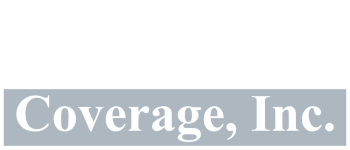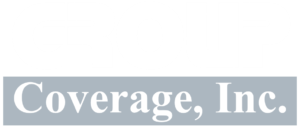Liability Insurance
Why Do I Need Liability Insurance?
Good liability risk management can reduce the chances that your business will be sued, but it can never eliminate the risk entirely. You or a member of your organization can make a mistake that injures someone or damages property. Your mistake could harm the reputation or interfere with the privacy of a customer, client, competitor or member of the general public. When such injuries occur, you may be legally liable to pay damages to someone who suffers a loss due to your actions or inaction.
Depending on the degree of harm and the number of people injured and/or value of property damaged, a lawsuit could bankrupt your business. Even if your organization is ultimately cleared of any wrongdoing, a determined plaintiff can keep you tied up in legal proceedings for a long time, entailing significant cost to defend yourself. Liability insurance pays the cost of your defense and protects your assets.

How Are Liability And Damages Determined?
Everyone in society has a duty to take reasonable care that his or her actions do not injure others. The same rule applies to business entities. Not repairing a pothole in a parking lot, not lighting a dark stairway, failing to train workers how to do their jobs safely and legally or failing to provide directions for the safe use of a product can constitute negligence if a client, customer or member of the general public is injured as a result. The legal meaning of negligence is failure to exercise reasonable care.
If the parties do not agree to settle a liability lawsuit, there may be a trial. Or, the parties may agree to use some alternative means of dispute resolution, such as arbitration, and be bound by the arbitrator’s ruling.
The law of the state where the lawsuit is filed sets the rules for the determination of liability and damages. The amount of damages imposed in any particular case is, of course, in part a function of the economic losses the plaintiff can prove he or she has endured due to the defendant’s negligence. In some states plaintiffs may also be awarded damages for
What Kind Of Liability Policy Should I Get?
For small businesses the most efficient and least expensive way to purchase liability insurance is usually as part of the Businessowners Policy (BOP) which combines property and liability insurance in one contract. Alternatively, a business may purchase a Commercial General.
What Types Of Damages Are Covered By The BOP?
Your liability insurer will pay damages that you are legally obligated to pay as a result of “bodily injury,” “property damage” or “personal and advertising injury,” up to the policy limits and subject to your deductible. Punitive damages are generally not covered, although there may be some exceptions.
Bodily injury means injury, sickness, disease or death; it may include injuries that are emotional or mental, such as post traumatic stress syndrome or humiliation.
Personal and advertising injury includes libel, slander or any defamatory or disparaging material or a publication or utterance in violation of an individual’s right of privacy; infringing the privacy or copyright rights of another in your advertisement; wrongful entry or eviction, or other invasion of the right of private occupancy; and false arrest or wrongful detention.
What Is Covered Medical Expenses?
For the most part, your BOP liability coverage is for situations where a third party claims you were negligent and sues for damages. The medical payments coverage is an exception, as it pays medical expenses for bodily injury to third parties that occurs on premises you own or rent or as a result of your operations regardless of fault.
People are less likely to sue you if they receive prompt medical payments to cover the costs of any injuries they have sustained for which they could claim your business or organization is liable. Medical Payments coverage gets the payments to them without their having to file a lawsuit or go to court and engage in a protracted claims process. This coverage also allows your insurer to pay small nuisance claims without the need for costly legal expenses.
People who commit insurance fraud usually know that for claims below a certain amount, insurers prefer to pay the claim or settle rather than incur the legal costs to defend against the claim. If you have a relatively high limit for medical payments, your insurer can more readily dispose of a lot of smaller claims. However, submitting multiple medical expense claims could negatively impact your insurance claims history. If you are in a business with significant traffic from the public, such as a retail store, be sure to discuss the possible consequences of your medical payments limit on your claims history with your agent.

Who Is Insured?
BOP liability coverage insures a sole proprietor, partners or partners named in the policy “Declarations,” but only with respect to their duties on behalf of the business. The spouses of sole proprietors or partners are also covered. If your organization has officers and directors, they are insured, as are your stockholders, but, once again, and this applies to all parties, only with respect to their duties or liabilities in connection with the business. Employees and volunteer workers are insured for acts committed within the scope of their employment in your business.
The Insurer’s Rights And Duties
The insurer may investigate any event that has led to a liability claim.
The insurer has a duty to defend the insured in any lawsuit seeking damages for a covered type of injury or damage.
At its discretion, the insurer may settle any claim or lawsuit.
The insurer’s right and duty to defend and pay claims ends when the applicable limits of insurance as specified in your policy “Declarations” are used up in the payment of judgments, settlements or medical expenses.
The insurer bears the cost of providing a defense; this cost is not part of your policy’s coverage limits.
What Is An “Occurrence?”
Your liability policy often refers to an “occurrence.” The ISO BOP (1) defines an “occurrence” as “an accident, including continuous or repeated exposure to substantially the same harmful conditions.” An accident is an event that causes injury to the body, property, person or reputation of a third party whom you did not intend to injure. (The designation “third party” means a party other than you or the insurer. It is a third party who claims or sues for damages as a result of an occurrence. You are the first party and the insurer is the second.) An explosion or a car accident are each examples of an occurrence that could result in bodily injury and/or property damage.
The phrase “continuous or repeated exposure to substantially the same harmful conditions” in the definition of occurrence makes clear that the insurer covers situations where harm was done because of an ongoing situation. For example, a person who lived near a commercial chicken farm might claim to have developed allergic asthma as a result of breathing dust from the chicken farm over many months.
(1) Includes copyrighted material of Insurance Services Office, Inc. with its permission. Copyright, Insurance Services Office, Inc., 2004.
When Is An Occurrence Covered?
Property damage or bodily injury is covered when it meets these three conditions:
- It is caused by an “occurrence”
- It is in the “coverage territory”
- It is during the “policy period”
Coverage Territory – Coverage territory is for the most part confined to the United States, including its territories and possessions, and Puerto Rico and Canada. It extends to international waters or airspace only when the travel is between destinations in the United States, including territories and possessions, and Puerto Rico and Canada.
There are three situations, however, when the coverage territory extends to injuries or damage anywhere in the world, so long as the lawsuit is brought in the United States and it involves:
Goods or products you made or sold in the United States, including its territories and possessions, and Puerto Rico and Canada.
The activities of someone from your business in another part of the world who is away from his or her home in the United States, including its territories and possessions, and Puerto Rico or Canada only for a short time.
How Are Policy Limits Applied?
The limits of your coverage are set forth in your policy “Declarations.” The policy describes how the limits will be applied. The amounts are the most the insurer will pay, regardless of the number of persons or organizations making claims or bringing suits against you.
The most the insurer will pay for either (1) all damages because of all bodily injuries, property damage and medical expenses arising out of any one “occurrence” or (2) personal and advertising injury sustained by any one person or organization depends on the circumstances. A single occurrence can produce many costly liability claims. If a fire due to your negligence spread from your building to destroy several neighboring structures and caused a death, the value of all the claims against you could be significant even though there was only one occurrence. Regardless of the circumstances, the payment must fall within the liability and medical expenses limit shown in the policy’s “Declarations” page.

- The most the insurer will pay for all bodily injury and property damages that result from the products-completed operations hazard is twice the liability and medical expenses limit.
- The most the insurer will pay for all bodily injury and property damages that result from occurrences other than those included under the products completed operations hazard, plus medical expenses, plus all covered personal and advertising injury, is twice the liability and medical expenses limit.
What Is The "Products Completed Operations" Hazard?
If you manufacture, sell or distribute a product, there is the possibility that it could cause bodily injury or property damage for which you would be legally liable. Even if you only sell or distribute the product, you could still be liable depending on the circumstances.
If you provide a tangible service, such as installing heating systems, there is the risk that negligence could result in damage caused by your work after your work is done (a “completed operation”). For example, a contractor installs a steam heating system and three months later it leaks and causes property damage.
The “products completed operations” hazard covers each of the above risks under certain conditions.
When a product is involved, to be covered, the injury or damage must occur away from your own premises—unless your business includes the selling, handling or distribution of your product for consumption on premises you own or rent.
With respect to property damage as the result of completed operations, “property damage” means physical damage to tangible property, including loss of use of that property. Intangible property, such as digital data, would not be covered.

Damage To Premises You Rent
What Is Not Covered?
Your Duties Regarding any Claim
By acting quickly, your insurer can often settle a liability claim and head off a costly lawsuit. For this reason, insurers require that you inform them as soon as practicable when you are aware of an occurrence that may result in a claim, even if no lawsuit has been filed. As part of your insurance contract, you are required to give this notice and to provide information about the occurrence, including names and addresses of anyone injured and any witnesses, as well as the nature of any injuries or damage. You also agree to cooperate fully in the investigation of the incident.
Other than for first aid, you will not have insurance coverage for any payments or expenses you make or agree to make without the insurer’s consent.
Endorsements To BOP Liability Coverage
Endorsements are additions to insurance contracts that change the coverage. Endorsements can add liability coverage for specific circumstances to the BOP. Among those most commonly added are:
- Employment Practices Liability
- Liquor Liability
- Employee Benefits Liability
Employment Practices Liability Endorsement – If your business has even a few employees, you cannot entirely avoid the risk of a lawsuit charging you with some type of employment discrimination, whether based on sex, race, age or any one of a number of other characteristics. This is typically one of those exposures—much like the exposure to theft by trusted insiders—that employers tend to think “won’t happen here.” Unfortunately, even if you have an excellent risk management program, an employment practices lawsuit can happen in any business. For example, you may fire a worker for poor job performance only to find he or she files a lawsuit charging that the real reason for the termination was race, religion, age or some other protected characteristic. Regardless of whether the employee can ultimately prove the charges, you may be tied up in a legal defense for a long time. Even if you think you’ve done nothing wrong, you could be found liable for discrimination and responsible for the payment of a large damage award. The Employment Practices Liability Endorsement provides coverage for violations of seven different federal antidiscrimination statutes named in the endorsement, as well as for violations of similar state and local statutes. You must choose a supplemental limit and deductible for this coverage that is separate from any of your policy’s other limits. As part of the contract, you give the insurer the right to defend against any claim. The insurer may offer to settle a claim. If you do not consent to the settlement, the most the insurer will pay on the claim is the amount it offered in settlement.
- Causing or contributing to the intoxication of any person
- Furnishing alcoholic beverages to a person under the legal drinking age or under the influence of alcohol
- Violating any statute, ordinance or regulation relating to the sale, gift, distribution or use of alcoholic beverages
Special Coverages
- Umbrella Liability Insurance
- Errors and Omissions Liability Coverage/Professional Liability Insurance
- Directors and Officers (D&O) Liability Insurance

Umbrella Liability—also known as Excess Liability Insurance—provides extra protection for catastrophic events. The primary policies are called “underlying” policies and are specifically listed, along with their limits, on the umbrella policy. Typically, the underlying policies are your primary general liability, auto liability and the employer’s liability section of your workers comp policy. The umbrella coverage starts to pay when a covered loss exhausts the primary policy’s per occurrence limit.
Most umbrella policies exclude employment practices liability, professional liability, product recall coverage, workers compensation and coverage for asbestos-related claims, pollution, war and terrorism.
Errors and Omissions Liability Coverage/Professional Liability Insurance – If you provide any type of advice, expertise or professional service, you risk being sued by a customer, client or other party who claims he or she was injured due to your negligent act, error or omission. This type of negligence is sometimes referred to as “malpractice.” Professional Liability Insurance, also called Errors and Omissions Liability Insurance, pays the cost of your defense and any damages awarded, up to policy limits. Insurance companies have developed many specialized policy forms that respond to the individual risks characteristic of particular professions and services.
Directors and Officers Liability Insurance (D&O) – D&O Insurance protects past, present and future directors and officers of a for-profit or nonprofit corporation from damages arising out of alleged or actual wrongful acts committed in their capacity as directors and officers. Some policies extend the same coverage to employees. The policies provide protection in the event of any actual or alleged error, omission, misstatement, misleading statement or breach of duty.
Many policies will also cover the corporate entity for claims involving the sale or purchase of the company’s securities. A D&O policy does not cover exposures properly covered under other policies, such as bodily injury or property damage, which are covered under general liability.
How Much Liability Coverage Do I Need?
Keeping Premiums Down
As with other types of insurance, the general rule for liability insurance, from an insurer’s perspective, is that your past claims history is a good predictor of your future claims. The greater the risk of future claims, the higher the premium. Good liability risk management is critical both to keeping premiums under control and avoiding losses.
Higher deductibles are another means of lowering premiums. Make sure that in the event of a loss, you can afford to pay the deductible you select.
What Is "Claims Made" Coverage?
There are two major forms of liability insurance policies: Occurrence and Claims Made.
Occurrence Policy: An occurrence policy covers a business for harm to others caused by incidents that occurred while a policy is in force, no matter when the claim is filed. For example, a person might sue a business in 2010 for an injury stemming from a fall in 1999. The policy that was in place when the incident occurred (i.e.1999) will apply, even if the company now has a policy in place with higher limits.
Claims Made Policy: A claims made policy covers the business based on the policy that is in force when the claim is made, regardless of when the incident occurred. In the above example, the limits in the policy in effect in 2010 would apply.

